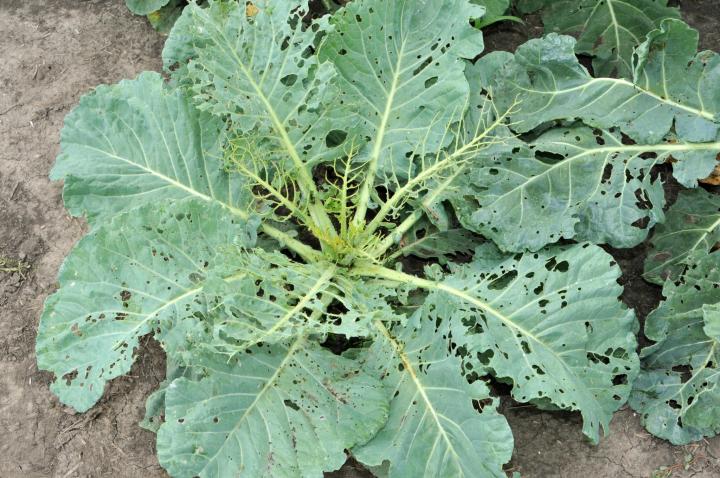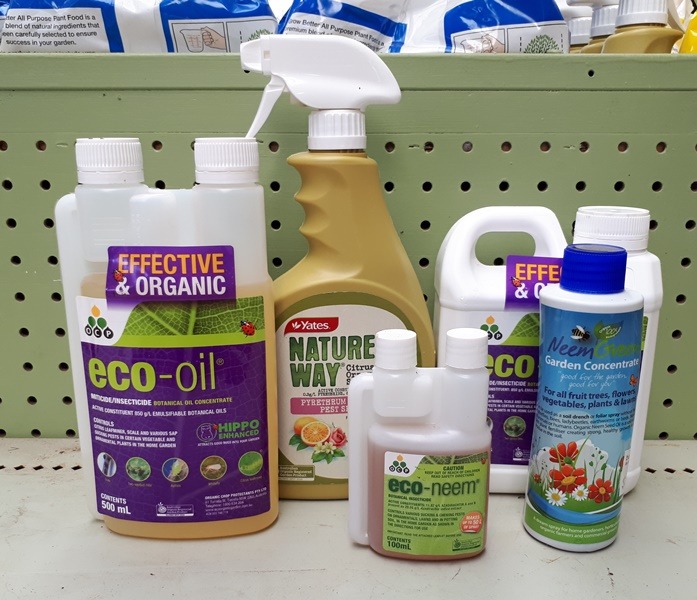The Secret to a Thriving Organic Garden
By Darrell Smith, Owner of DH Garden Centre & DH Landscape Solutions, Vancouver BC
There’s a moment every gardener dreads: you walk into your garden, hopeful, only to find your lush greens riddled with holes, your cabbage devoured by worms, or your precious spinach limp and sad-looking. I’ve seen it more times than I can count at our garden centre in Kitsilano, Vancouver, and in the yards of countless landscaping clients across the city.
But what if I told you there’s one simple thing you can do to prevent up to 90% of these pest problems?
Let me walk you through this – gardener to gardener, from someone who’s spent over 25 years in landscaping and over a decade in the garden centre business.

Let me walk you through this—gardener to gardener, from someone who’s spent over 25 years in landscaping and over a decade in the garden centre business.
The Story: How One Small Change Transformed a Garden
A few seasons back, I met a customer at DH Garden Centre, we’ll call her Megan. Megan was one of those passionate home gardeners who put her heart into every seed she planted. Her backyard in Vancouver was a dream: beautifully built raised beds, rich organic compost mixed into every inch of soil, and a deep-rooted love for growing her own food.
But spring after spring, she hit the same wall.
“I don’t get it,” she told me. “I do everything right. I prep the soil. I plant the best heirloom seeds. But by May, my garden looks like a buffet for bugs.”
Her kale? Swiss-cheesed with holes.
Her lettuce? Barely growing, pale and stunted.
Her cabbages? Crawling with cabbage worms no matter how many she picked off by hand.
She was heartbroken and exhausted.
After so many seasons of disappointment, she was on the verge of giving up on growing vegetables altogether.
That’s when I shared with her one of the simplest- but most powerful – tools I’ve learned in my 25+ years of gardening and landscaping across Vancouver:
Insect netting.
Not a pesticide. Not a fancy gadget. Just a lightweight, breathable mesh that forms a protective barrier over your beds—keeping out pests, birds, squirrels, wind, and even spring hail.
At first, Megan was skeptical. “That’s it?” she asked. “A net?”
But she gave it a try.
What happened next was nothing short of transformative.
Just three weeks later, she came back to the garden centre, beaming. “Darrell,” she said, “I’ve never seen my garden look like this.”
Her kale was lush and full – no holes.
The lettuces were vibrant, crisp, and ready for picking.
The cabbage heads were forming beautifully – no worms in sight.
She had done the same planting, in the same beds, with the same soil—but one small change had made all the difference.
It wasn’t just a garden upgrade, it was a complete shift in her experience. No more daily pest battles. No more stress. Just joy. That’s what gardening should feel like.
And Megan’s story? It’s not unique.
We’ve seen this again and again at DH Garden Centre from small balcony setups to full backyard food forests across Kitsilano and beyond.
Sometimes, the answer isn’t more sprays or complicated solutions. It’s just about protecting what you’ve already built – starting with a simple, reliable insect netting system.
:strip_icc()/7003223-13400-10_8eC6xSe2KojA-3m-pttkcq-8b32a623d84748b38713350d7061399a.jpg)
It wasn’t just a garden upgrade—it was a complete shift in her experience. No more daily pest battles. No more stress. Just joy. That’s what gardening should feel like.
What Is Insect Netting and Why Is It a Game-Changer?
Insect netting is a fine mesh that acts as a physical barrier between your plants and the outside world. It’s often overlooked by new gardeners because it seems so… basic. But let me tell you: basic doesn’t mean ineffective.
When you lay insect netting over your raised beds—especially right after transplanting young seedlings—you’re protecting your crops during their most vulnerable stage. That’s when bugs like cabbage worms, flea beetles, and aphids do the most damage.
Here’s what it protects your garden from:
-
🐛 Cabbage loopers and cabbage worms
-
🦟 Aphids, whiteflies, and leaf miners
-
🐌 Slugs and snails (combined with Sluggo, even better)
-
🐿️ Squirrels, rabbits, and even curious groundhogs
-
🐦 Birds that peck at peas and leafy greens
-
🌬️ Wind damage
-
🌨️ Hail in shoulder seasons

Insect netting is a fine mesh that acts as a physical barrier between your plants and the outside world.
The Before-and-After Is Wild: A Real Garden Transformation
Back to Megan’s garden.
After she installed the insect netting – just a few sheets of fine mesh tucked over flexible hoops above her kale, brassicas, and lettuces – we didn’t have to wait long to see the results. Within just two weeks, the transformation was undeniable.
Her spinach, which had previously limped along with yellowing edges and chewed-up leaves, suddenly tripled in size. Deep green, glossy, and upright – it looked like something out of a seed catalogue.
The lettuces? They were picture-perfect. I’m talking lush heads with tight, crisp layers—no holes, no slug trails, no signs of stress. The kind of lettuce that makes you rethink everything you thought you knew about backyard growing.
And then there was the kale. Megan’s kale had always struggled. It would sprout, stretch, then get ravaged by cabbage moths and flea beetles. But under the netting, it was a whole new plant. The leaves were huge, longer than her forearm—and not a single bite mark in sight. The deep green color told us everything we needed to know: this kale was thriving.
Now here’s where the contrast really hits home.
Just three feet away—in the exact same garden, same soil, same weather—there was another bed she hadn’t covered. She’d left that one exposed, “just to compare,” she said.
It was a completely different story.
That bed told the tale of every beginner gardener’s heartbreak. The lettuce was stunted, curled at the edges, clearly stressed. The kale was riddled with tiny holes, looking more like lace than food. There were obvious signs of pest activity dark pellet-like poop, chewed stems, and little green worms curled under the leaves.
Side by side, it looked like two different worlds.
One was an oasis of abundance—vibrant, clean, protected.
The other? A battle zone.
That simple sheet of insect netting had created a microclimate of peace, allowing the plants underneath to focus on what they do best: growing.
And for Megan? That garden gave her something even more powerful than a great harvest.
It gave her hope again.
Bonus Benefits: More Than Just Pest Protection
You might be thinking: “Okay Darrell, it keeps out bugs. But is that it?”
Not at all. Insect netting is a multi-functional powerhouse, especially in places like Vancouver where weather can flip on a dime.
1. Wind Reduction
Here in Kitsilano and the rest of the Lower Mainland, early spring winds can be brutal. Young plants get whipped around, leaving them stressed and stunted. The netting acts like a gentle windbreaker, taking the brunt of the gusts so your seedlings don’t have to.
2. Hail Protection
Ever been hit with a surprise April hailstorm? Me too. When you’ve just spent hours transplanting lettuce starts, hail can feel like betrayal. But with insect netting, hail bounces right off, leaving your greens untouched.
3. Bird Control
If you’ve ever tried growing peas, you know the heartbreak of finding their delicate shoots nibbled off. Birds love young pea sprouts. Cover them with netting and problem solved.
4. No Bees Required
Many vegetables—like peas, brassicas, and lettuce—don’t require bees for pollination. So you can leave your netting on from planting to harvest without interfering with fruit set.
But What If It’s Too Late and Pests Are Already There?
Sometimes, despite our best intentions, we miss the window. Maybe you didn’t cover your seedlings soon enough. Don’t worry—there are still solutions.
Here’s what I recommend at DH Garden Centre for pest management when netting comes too late:
✔️ BT (Bacillus thuringiensis)
This organic bacteria targets cabbage worms, tomato hornworms, and loopers. It’s safe for humans and beneficial insects but devastating for the pests.
✔️ Sluggo
A must-have for battling slugs. It’s iron-based, safe around pets and wildlife, and very effective.
✔️ Neem Oil (Cold-Pressed with Azadirachtin)
Ideal for aphids, whiteflies, and soft-bodied insects. Mix with mild dish soap and spray directly onto affected plants.
✔️ Kaolin Clay (Surround)
Creates a physical barrier on cucumbers, fruit trees, and squash—discouraging beetles and other chewing pests.

Solution for pest management when net comes too late
When to Use Insect Netting
You don’t have to cover your entire garden like Fort Knox. Be strategic. Here’s when I suggest using it:
-
Right After Transplanting Seedlings – Especially brassicas, lettuce, spinach, and other leafy greens.
-
During the Shoulder Seasons (March–May, Sept–Oct) – To block hail, heavy wind, and pest migration.
-
Over High-Risk Crops – Kale, cabbage, broccoli, beets, carrots, and peas.
-
In Raised Beds, Containers, or Pallet Beds – Where pests love to sneak in and dig around.
A Garden That Practically Takes Care of Itself
That’s what Megan said to me a few weeks after installing her netting:
“Darrell, for the first time, I’m not stressed every time I walk into my garden. I know my plants are safe.”
When you eliminate 90% of your pest problems before they start, your gardening becomes joyful again. You spend less time battling bugs and more time harvesting, eating, and sharing your bounty.
And that’s what it’s all about, isn’t it?
Want to Try It Yourself?
At DH Garden Centre, we carry a range of high-quality insect netting, plus the raised beds, organic soil blends, and heirloom seeds to go with it. Whether you’re growing in containers on a balcony or transforming your backyard into a full-on food forest—we’re here to help.
Visit us at: 📍 3742 West 10th Avenue, Vancouver, BC V6R 2G4
Or shop online at: dhgardencentre.com
Let us know what you’re planting this year and if you’ve had any pest disasters. We’re happy to help you build a plan that protects your crops and supports your long-term garden goals.
Come see us. We’re more than a garden store, we’re a community of growers.
Final Thoughts From Darrell & The DH Team
Gardening in Canada isn’t always easy. Between wild weather swings and stubborn local pests, many new gardeners feel defeated before they even get their first harvest.
But with the right knowledge and a few simple tools like insect netting – you’ll be amazed at what’s possible.
As someone who’s walked hundreds of backyards, helped families build gardens, and coached countless first-time growers, I can tell you: this is the one thing I wish more people knew about.
So take the step. Protect your plants. And grow with confidence this season.


